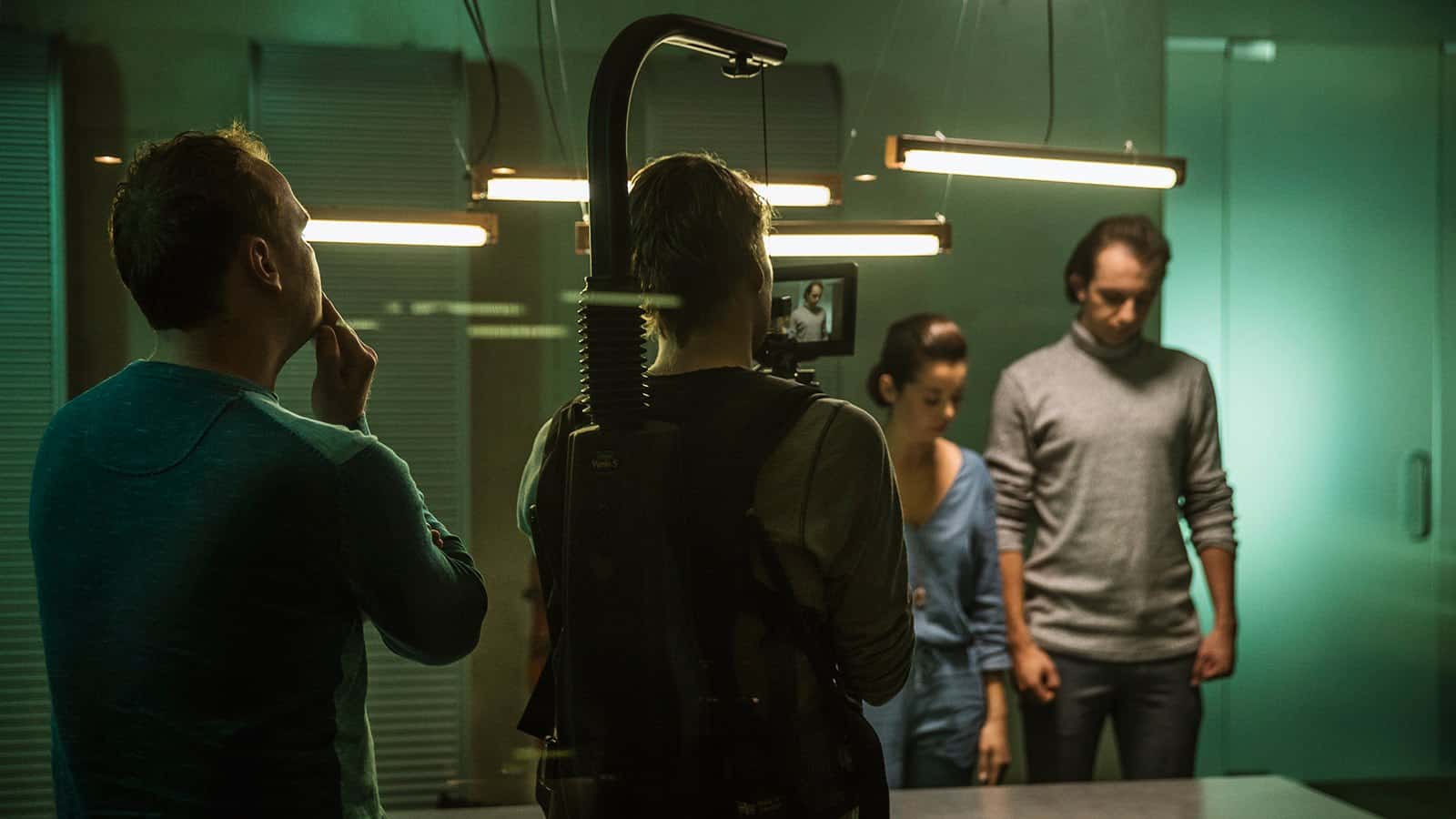Director of Photography

- Responsible for creating the overall visual look of the film
- Works closely with the Director, camera crew and lighting department to achieve the vision
- Managing all aspects of filming: from ordering and overseeing equipment to recces to reviewing footage
Overview
The Director of Photography are one of the key creative roles. The DoP’s physically create the desired look using lighting, framing, camera movement, etc. DoP’s are in charge of and work very closely with their camera department and the lighting department, particularly the gaffer. They decide which cameras and lenses they want to use for the production of the film and working closely with the Director on designing the shots. The DoP and Director will discuss the visual style of the film in pre-production and test lenses, filters or film stock to check they fit with the Director’s vision. During post production, DoPs attend the digital grading of the film, which may involve up to three weeks of intensive work.
Gaffer
- In charge of all the electrical work on a production
- Leading a team of lighting technicians
- Working closely with the Director of Photography
Overview
Also known as the chief lighting technician, the Gaffer is the person primarily responsible for creating a lighting plan aligned with the Director of Photography’s design. The Gaffer will oversee the practical and technical aspects of the electrics and lighting to create the desired effects and the best lighting scenario according to the camera framing. They control the lighting budget and ensure the best equipment and power supplies are arranged. With the Best Boy, the Gaffer will check through list of lighting to make sure the correct equipment is ordered. They position the lighting equipment on set and control it during shoot.
Script Supervisor (Continuity)
- Ensuring that the shots will work together when edited
- Making sure there are no continuity issues
Overview
Often films are shot completely out of script sequence and therefore need someone to ensure each scene is able to be edited into a visually and verbally logical order. The Script Supervisor’s job is to make sure this happens. During pre-production a Script Supervisor breaks down the script to check for any inconsistencies or issues and establish estimated running times. They check the shooting schedule to make sure that each scene has been covered from all necessary shots, angles and distances needed to ensure that when the film is being edited they are not missing anything. Often Script Supervisors will try to make sure there is as much coverage as possible. They attend all pre-production meetings, recces and rehearsals.
On set the Script Supervisor will work with the Director to solve any potential continuity or coverage issues. They keep a detailed log of all elements of continuity and technical details for the editor. They also keep detailed photographic records of the set and cast for continuity. They complete detailed Daily Log Sheets, Production Reports and Continuity Reports which are sent off to the required departments.
Camera Operator

- Preparing the camera equipment and operating the camera during shoot
- Working with the Director and Director of Photography to achieve the visual style of the film
Overview
Camera Operators assemble and set up the camera equipment. They then frame and capture the action of the film. Camera Operators follow the DoP and Directors direction for shot composition.
First Assistant Camera (1st AC, Focus Puller)
- Adjusting the camera lens or ‘pulling focus’ to follow the action on set
- Managing and maintaining camera equipment and accessories
- Following instructions from the Director or Director of Photography (DoP)
Overview
1st AC’s are highly skilled individuals. It is there job to pull focus on the actors as they move through the shot. They are also responsible for all the camera lenses, filters and matt boxes or anything directly connected to the camera itself.
Second Assistant Director (2nd AC, Clapper Loader)
Overview
- Preparing the camera, loading new batteries and film, and changing lenses
- Operating the clapperboard and managing the camera paperwork
- Working closely with the 1st AC rest of the Camera team
2nd AC’s are an integral part of the camera crew. Part of their job is to ensure that the entire camera department runs smoothly on set. They also assist the Camera Op to position the camera and are responsible for loading and unloading film magazines, charging and changing batteries and lenses. One of their key jobs is to operate the clapperboard and fill out all the camera sheets.
Digital Imaging Technician
The DIT is responsible for the digital handling of footage. They make sure the digital settings on the camera are correct. They DIT is also in charge of backing up the footage across multiple devices. They may create the compressed dailies from the raw footage and prepare all digital images for post-production
Best Boy (lighting)
The best boy is the chief assistant to the gaffer. They are not usually on set, but dealing with the electric truck, rentals, manpower, and other logistics.
Key Grip
The key grip manages all the Grips and is the head of the set operations department. They work with the Director of Photography to help set up and achieve the correct lighting and blocking.
Grips
Grips are trained lighting and rigging technicians. They work with the electrical department to put in the non-electrical components of lighting set-ups required for a shot, such as flags, overheads, and bounces.
Best Boy
The Best Boy is chief assistant to the Key Grip.
Dolly Grip
The Dolly Grip is in charge of operating the camera dollies and camera cranes . They will place, level, and move the dolly track, then push and pull the dolly, and usually a camera operator and camera assistant as riders.
To have a full overview of all the roles in the film check out : http://liftoffnet.wpengine.com/film-industry-jobs/



You must be logged in to post a comment.